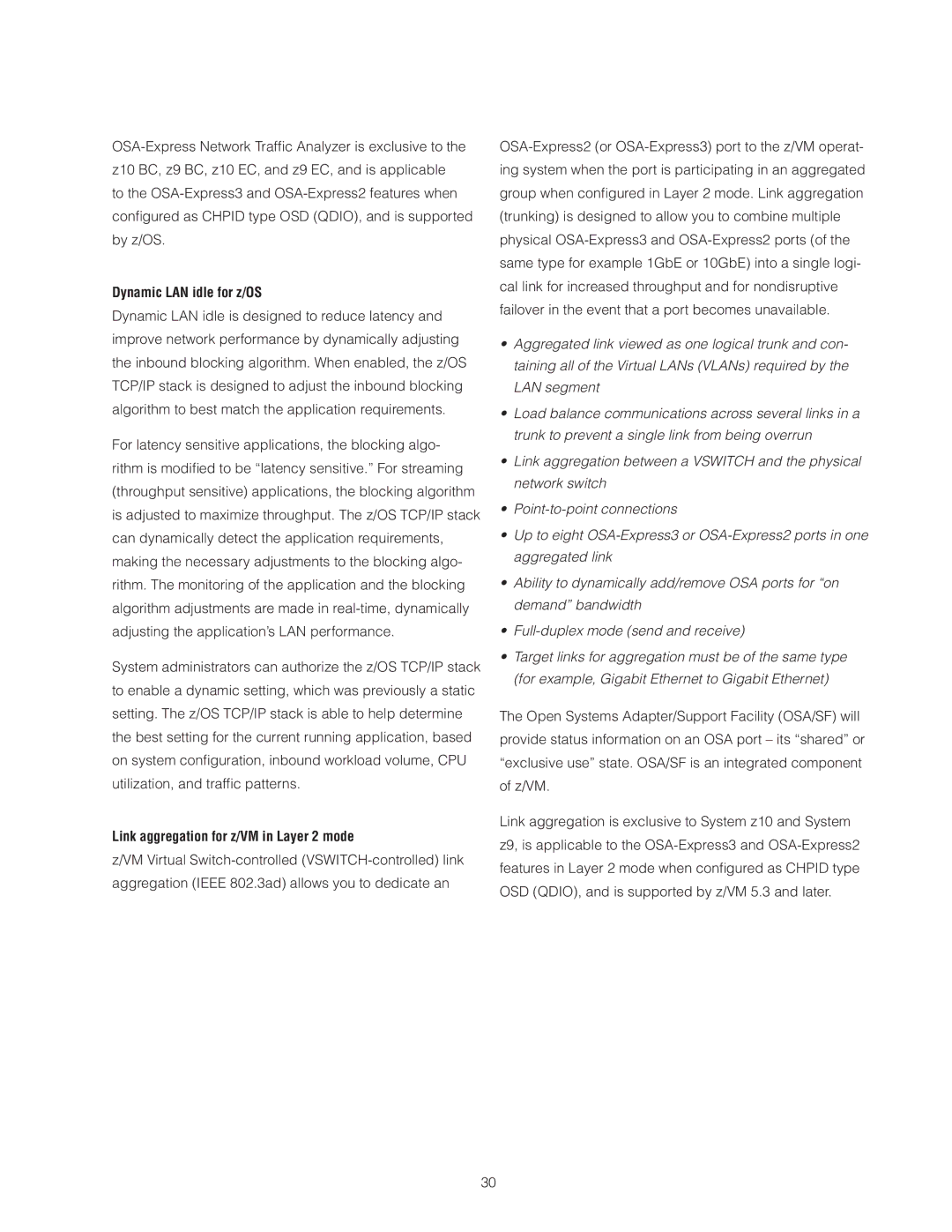Dynamic LAN idle for z/OS
Dynamic LAN idle is designed to reduce latency and improve network performance by dynamically adjusting the inbound blocking algorithm. When enabled, the z/OS TCP/IP stack is designed to adjust the inbound blocking algorithm to best match the application requirements.
For latency sensitive applications, the blocking algo- rithm is modifi ed to be “latency sensitive.” For streaming (throughput sensitive) applications, the blocking algorithm is adjusted to maximize throughput. The z/OS TCP/IP stack can dynamically detect the application requirements, making the necessary adjustments to the blocking algo- rithm. The monitoring of the application and the blocking algorithm adjustments are made in
System administrators can authorize the z/OS TCP/IP stack to enable a dynamic setting, which was previously a static setting. The z/OS TCP/IP stack is able to help determine the best setting for the current running application, based on system confi guration, inbound workload volume, CPU utilization, and traffi c patterns.
Link aggregation for z/VM in Layer 2 mode
z/VM Virtual
•Aggregated link viewed as one logical trunk and con- taining all of the Virtual LANs (VLANs) required by the LAN segment
•Load balance communications across several links in a trunk to prevent a single link from being overrun
•Link aggregation between a VSWITCH and the physical network switch
•
•Up to eight
•Ability to dynamically add/remove OSA ports for “on demand” bandwidth
•
•Target links for aggregation must be of the same type (for example, Gigabit Ethernet to Gigabit Ethernet)
The Open Systems Adapter/Support Facility (OSA/SF) will provide status information on an OSA port – its “shared” or “exclusive use” state. OSA/SF is an integrated component of z/VM.
Link aggregation is exclusive to System z10 and System z9, is applicable to the
30
